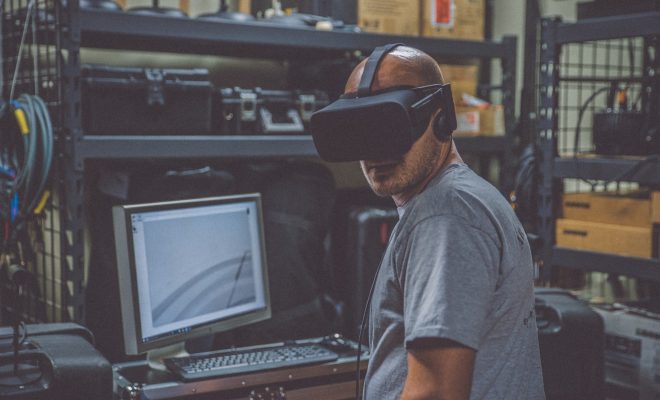Chatbots in Classrooms: Do They Help or Displace Teachers?

By Lesley Vos
An educator by vocation and a web writer for a plagiarism check tool by occupation, I do my best to pay attention to the latest ed tech happening in classrooms. The concept of chatbots has met my eye lately, as their role in education remains mooted, to say the least.
Let’s face it:
Education is a sector where innovations move slowly. So when that hype over artificial intelligence to enhance teaching started several years ago, few had thought of both sides of this coin. Dazzled by astounding benefits AI might bring to education together with chatbots (they are many, indeed!), we overlooked some wake-up calls.
Nope, I don’t want to say that AI is a curse. Robots are an efficient instrument to teach human nature; they help students navigate the learning process; they serve as a tutoring resource, answering some basic questions; they might influence classroom engagement, work as student reminders, and more. My point is, we need to take all points into consideration before letting chatbots into the classroom.
What (who?) is a chatbot?
In plain English, it’s a software stimulating human conversation. Like Siri from Apple or Alexa from Amazon. Chatbots are present in every industry, and they have been digging deeper and deeper into the education world since 2016 after Bill Gates had called them the future of education and invested more than $240 million to the field of personalized learning.
It’s an AI system interacting with people via text.
We all heard of Jill Watson, a chatbot assisting teachers of online courses at the Georgia Institute of Technology. She answered routine questions from students, while professors concentrated on more complicated issues. Now Jill helps students across campuses, and she is a palmary example of goodness chatbots bring to the education world.
Given that our students are Gen Y and Gen Z representatives who love messengers a-la Whatsapp or Snapchat, chatbots like Jill are a goldmine of information and automated responses to help mentees get basic tasks done fast. As Erik Bøylestad Nilsen from BI Norwegian Business School said, “Students have a lot of the same questions over and over again. They’re looking for the answers to easy administrative questions, and they have similar questions regarding their subjects each year. Chatbots help to get rid of some of the noise. Students are able to get to answers as quickly as possible and move on.”
That’s all well and fine for online learning. But when we go offline – some concerns appear about chatbots to replace teachers in classrooms sooner or later.
Any reasons to worry?
Chatbots benefits are many, indeed. But every coin has two sides, as we know. The reverse of the chatbots coin in education is what I would like to emphasize now for teachers to keep in mind when inviting artificial intelligence to their classrooms.
If speaking about chatbots taking teachers’ jobs and leaving us unemployed, I wouldn’t worry about that. Chatbots won’t take our jobs because they miss a human factor and soft skills coming hand in hand with subject knowledge for effective teaching. What they can is take repetitive tasks and give educators an opportunity to concentrate on a relationship with students, providing them with personal guidance and enhanced curricula.
Long story short, chatbots make teachers’ work more meaningful and allow them to focus on better-quality mentorship and research.
But:
Chatbots lack individual approach and personal connections. Relying too much on them in tutoring or grading may lead to oversights, which hurts more than helps.
Chatbots are machines with a high error rate. So they may give wrong information to students, influencing their knowledge and grades relatively.
Chatbots are yet expensive for average schools: installation, repair, and maintenance all cost money. Plus, while repairing a chatbot, we risk losing tons of data and research, gathered and prepared for students beforehand.
Chatbots don’t help to develop critical thinking. Students wait for ready answers from a machine, ask others to write their papers, then give such works to professors, therefore seeding plagiarism in academia.
Chatbots can’t substitute interpersonal communication, preventing emotional intelligence development among students.
Chatbots have a knowledge limit, thus making it necessary for educators to watch them right along to know when it’s time to get involved in the learning process.
Chatbots may cause addiction. The risk of technology addiction takes place if we rely on machines in everything. Though today students were, figuratively speaking, born with smartphones in hands, it doesn’t mean they can succeed in learning, work, and everyday life without personal interaction.
And the last but not least:
I know it will strike a false note in the world of tech-savvy students, but some youngsters simply don’t like interacting with robots. A lack of emotional touch, cold and standard answers to questions, poor improvisation, and often a non-intuitive interface – all these factors confuse and frustrate users. Here’s something we can both agree on: chatbots are still in their early stage of development; and if poorly-trained, they can hardly help the education world preparing future leaders and happy people.
So, with clearly more benefits than drawbacks, chatbots aren’t yet clever enough to displace teachers in classrooms. But it’s not the goal. The goal is to find a balance between a machine that optimizes tasks and a person who uses this machine. Instead of replacing teachers, AI is here to make their job easier.






